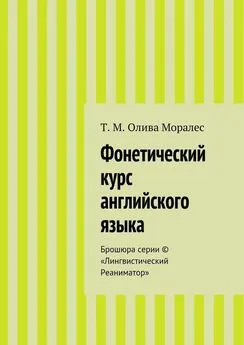Владимир Аракин - Практический курс английского языка 1 курс
- Название:Практический курс английского языка 1 курс
- Автор:
- Жанр:
- Издательство:ВЛАДОС
- Год:1998
- ISBN:нет данных
- Рейтинг:
- Избранное:Добавить в избранное
-
Отзывы:
-
Ваша оценка:
Владимир Аракин - Практический курс английского языка 1 курс краткое содержание
I - V курсов педагогических вузов.
Цель учебника – обучение устной речи на основе развития необходимых автоматизированных речевых навыков, развитие техники чтения, а также навыков письменной речи.
Практический курс английского языка 1 курс - читать онлайн бесплатно полную версию (весь текст целиком)
Интервал:
Закладка:
together on Wednesday, didn't we?
R: Yes, but that's three days ago, Daphne. I'm longing to see you. Will you
come with me tonight?
D: Oh, not tonight, Robert. I'm feeling a bit tired.
R: Couldn't we go out just for an hour? I've been looking forward to seeing
you all day.
D: I can see you haven't been playing tennis all day or you ...
R: I wish I had. I've been helping the old man in the garden. D: Then you
must be feeling tired too!
R: Listen, darling! Are you telling me the truth? Or are you going out with
this James, whoever he is? D: Of course not. He's ...
R: You're going out with him this evening, aren't you?
D: No. I've told you. I don't want to go out this evening.
R: Now I know why. You're going to sit by the phone all ^ening, waiting for
your beloved Jimmy to give you a call.
D: Don't be ridiculous, Robert. He isn't my beloved Jimmy. And anyway ...
his name is James. He doesn't like to be called Jimmy.
e) Explain theuse of tenses:
1. You seem to have been avoiding me ... . 2. I'm longing to see you. 3. I'm
feeling a bit tired. 4. I've been looking forward .... 5. You haven't been playing
tennis ... . 6. You've been helping the old man . . . . 7. ... you must be feeling
tired too. 8. Are you telling me the truth?
f) Make up situations in which you can use the tenses mentioned above. Make other
students explain the use.g) Read the text"A Lovers' Quarrel" (Part Three). Translate it
into Russian:
Part Three
R: Oh! He doesn't, does he? Well, if I get my hands on him people will be
calling him Scarface Jimmy. I suppose you've been seeing this poor fish every
day. That's why you haven't been seeing me.
D: Of course it isn't. Do stop talking nonsense, Robert, and listen...
R: To your explanation? You needn't bother, I understand everything
perfectly. (He imitates her.) Oh, hullo, James darling. I was wondering
whether you'd call this evening? I'm not a fool, you know.
D: For the last time... will you listen?
R: Go on. I'm all ears. ,
D: James is my cousin. He's thirty-four, he's married , and he has 3 children.
He's coming to London next week from Scotland, and he'll be staying with us.
We're expecting a call from him this evening.
R: Your cousin? Honestly? Married? Why the devil didn't you sayso?
D: You didn't give me the chance. R: When
can I see you again?
D: I'll see you in half an hour ... unless you're feeling too ashamed of
yourself.
h) Explain the use of tenses:
1. If 1 get my hands on him people will be calling him ... . 2. You've been
seeing this poor fish... 3. He's coming to London ... and he'll be staying with
us ....
i) Make up' situations in which you can use the tenses mentioned above. Make other
students explain their use. j) Reproduce the text **A Lovers' Quarter in Indirect
Speech.
LABORATORY WORK
I. Answer the questions. Record your answers in the intervals.
II. Translate the sentences into English using the active vocabnlary.
III. Spell and transcribe the words.
II. Translate the phrases into English.
II. Write the dictation.
VI.
Listen to the wrong statements. Correct them.
VI.
a) Listen to the poem "Twilight" by George G. Byron, b) Mark the stresses
and tunes. Practise the poem, c) Learn it by heart.
I N T R O D U C T I O N
INTONATION
I n t o n a t i o n is a complex unity of variations in pitch, stress, tempo and
timbre.
T h e p i t c h c o m p o n e n t of intonation, or melody, is the changes in
the pitch of the voice in connected speech.
S e n t e n c e s t r e s s , o r a c c e n t , is the greater prominence of one
or more words among other words in the same sentence.
T e m p o is the relative speed with which sentences and intonation-groups
are pronounced in connected speech.
S p e e c h t i m b r e is a special colouring of voice which shows the
speaker's emotions, i. e. pleasure, displeasure, sorrow, etc.
Intonation serves to form sentences and intonation-groups, to define their
communicative type, to express the speaker's thoughts, to convey the attitudinal
meaning. One and the same grammatical structure and lexical composition of the
sentence may express different meaning when pronounced with different
intonation.
e. g. -> Isn't it ridiculous? (general question) -> Isn't it
ridiculous! (exclamation)
Long sentences, simple extended, compound and complex, are subdivided
into i n t o n a t i o n - g r o u p s . Intonation-group division depends on the
meaning of the sentence, the grammatical structure of the utterance and the style
of speech Each intonation-group is characterized by a definite intonation pattern.
The number of intonation groups in the same sentence may be different.
е. д. In ,June | Ju,ly | and /August | our V children 'don't 'go to ^school.
In VJune, 'July, and ,August | our V children 'don't 'go to ^school.
The end of each sentence is characterized by a relatively long pause. The
pauses between intonation-groups are shorter, they vary in length. There may be
no pauses between intonation-groups at all.
Each intonation-group is characterized by a certain intonation pattern, i. e.
each syllable of an intonation-group has a certain pitch and bears a larger or
smaller degree of prominence. Consequently pitch levels are inseparably
connected with stress. Intonation patterns consist of one or more syllables.
Intonation patterns containing a number of syllables consist of the following
parts: the pre-head, the head, the nucleus and the tail.
T h e p r e - h e a d includes unstressed and half-stressed syllables
preceding the first stressed syllable.
T h e h e a d includes the stressed and unstressed syllables beginning with
the first stressed syllable up to the last stressed syllable.
The last stressed syllable is called t h e n u c l e u s . The unstressed and
half-stressed syllables that follow the nucleus are called t h e t a i l .
e. gr. It was a Vvery 'sunny xday yesterday. It was a ...
— the pre-head. ... V very 'sunny — the head. ...
xday ... — the nucleus. ... yesterday — the tail.
The rises and falls that take place in the nucleus or start with it are called
n u c l e a r t o n e s .
T h e n u c l e u s is the most important part of the intonation pattern as it
defines the communicative type of the sentence, determines the semantic value
of the intonation-group, indicates the communicative centre of the intonation-
group or of the whole sentence.
T h e c o m m u n i c a t i v e c e n t r e is associated with the most
important word or words of the intonation-group or of the sentence.
The nuclear tone of the final intonation-group is determined by the
communicative type of the whole sentence.
The communicative types of sentences are differentiated in speech according
to the aim of the utterance from the point of view of communication, i. e. in
order to show if the sentence expresses a statement of fact, a question, a
command or an exclamation.
There are four communicative types of sentences:
1. Statements, е. д. I like music.
2. Questions, e. g. Can you prove it?
3. Imperative sentences or commands, e. g. Try it again.
4. Exclamations, e. g. Right you are!
The intonation pattern of the non-final intonation-group., mainly its nuclear
tone, is determined by the semantic value of the intonation-group and by its
connection with the following one.
The falling nuclear tone shows that the non-final intonation-group is
complete, important by itself and is not so closely connected with the following
intonation-group.
A longer pause after an intonation-group pronounced with the falling tone
makes the intonation-group even more significant.
e. g. I'll -> tell him vall | when he vcomes.
The rising nuclear tone shows that the non-final intonation-group is closely
connected in meaning with the following intonation-group, is not important by
itself and implies continuation.
e. g. -> Generally,speaking, 11 pre->fervtennis.
The intonation pattern is also modified by the speaker's attitude towards his
utterance:
e. g. vWhy? — detached, even unsympathetic. /Why? —
wondering.
In English notional words (nouns, adjectives, verbs, etc.) are generally
stressed. Form-words and most pronouns (personal and possessive mainly) are
generally unstressed. But any part of speech may be stressed if it is semantically
important.
е. д. V What is he 'going to ^do? — do is the communicative
centre.
-> What is vhe going to do? he is the communicative
—
centre.
METHOD OF INDICATING INTONATION ON THE STAVES
Unstressed syllables are represented by dots, stressed syllables are marked by
Читать дальшеИнтервал:
Закладка:





![Владимир Аракин - Практический курс английского языка 3 курс [calibre 2.43.0]](/books/1072035/vladimir-arakin-prakticheskij-kurs-anglijskogo-yazyk.webp)




